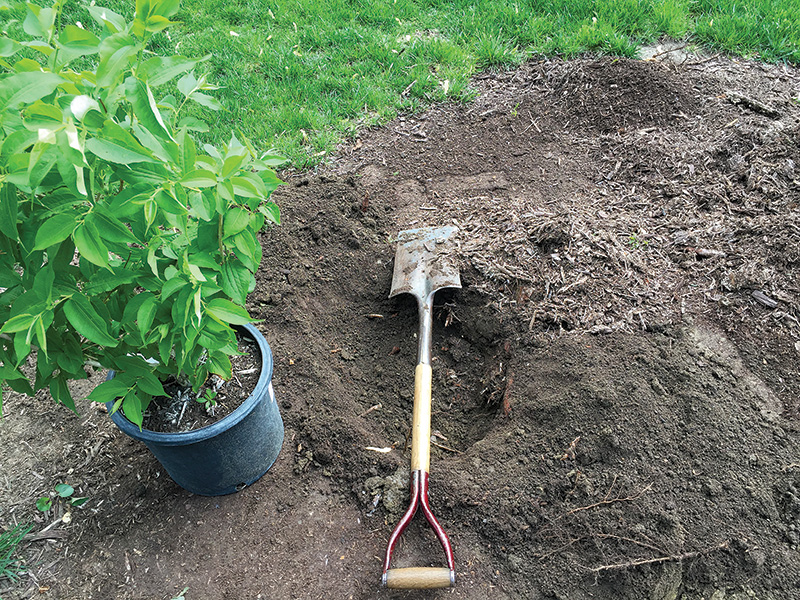
Prepare wide and shallow planting holes to ensure successful establishment. Photos by John C. Fech
To obtain the intended benefits of trees on the golf course, it’s important to manage them correctly. Just as with turf, there are as many appropriate and beneficial techniques as there are detrimental ones. In addition to the good and bad list, there are a few that are “maybe” or situational practices, as well as the consideration of “keep a close eye on these” that often leads to tree removal as a best practice.
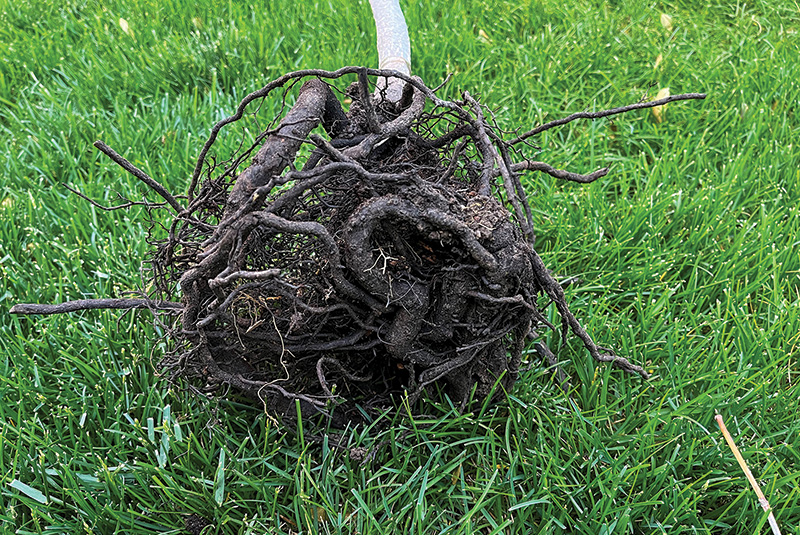
Spread roots out laterally in the planting hole to avoid a girdled and tangled arrangement.
The good stuff: Approved and beneficial
Proper planting procedures. Even though planting seems pretty simple and straightforward, the number of improperly planted trees is astonishing. Since there is no way to “unplant” and start over, it’s critical that it be done correctly right from the start. The most important facets include digging a wide and shallow planting hole, removing burlap and wire around the roots, spreading the roots out instead of allowing them to remain in a circular fashion, using only the existing native soil to backfill around the roots and applying sufficient water to settle the roots in the planting area.
Proper Year One practices. In many ways, Year One of a tree’s life is the most important. After the initial soaking, it’s crucial to keep the roots moist but not soggy. Checking frequently with a metal probe, such as a long screwdriver, makes this easy. Another Year One practice (or at least Year Two) is to eliminate any co-dominant leaders, ones that will soon compete with one another for the central direction of the canopy.
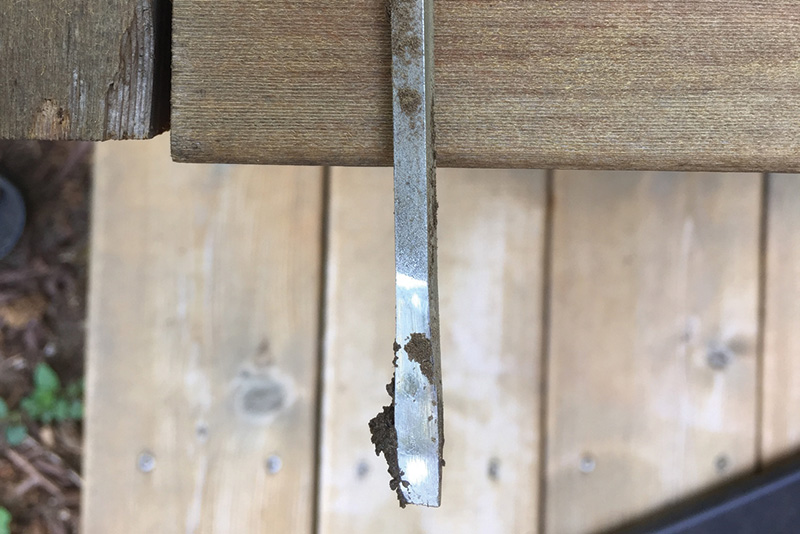
A metal probe works great for checking soil moisture after planting.
Crown cleaning. Removing broken, pest-infested and poorly angled branches is a critical best practice. Broken limbs always have the potential to fall on unsuspecting golfers, while pests such as cankers and borers can often spread and weaken the overall structure of the tree. Branches that grow downward or closely parallel with others should be eliminated. In most cases, removal of these limbs is welcome in that it gets rid of problematic tree parts and increases the sunlight penetration under the canopy.
Elimination of extended branches. In addition to regular crown cleaning, sometimes branches grow to a greater-than-expected length. These often add excessive weight to the branch, and, if the attachment to the trunk is less than sturdy, can break in windstorms due to the lack of resistance to the energy load. Longer-than-average branches also create more shade than limbs of a traditional length, which again may create more shade than is desired for the health of the turf.
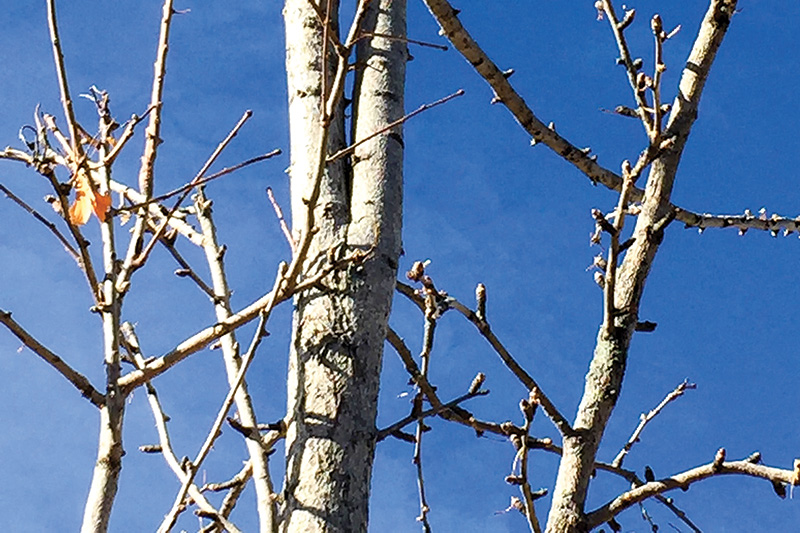
Eliminating one of these leaders will prevent many future problems.
Regular scouting. As with turf pests, regular scouting is imperative. Identifying a disease or insect issue early in its life cycle makes it much easier to control than if caught after it is a fully blown problem. Assigning crew members to regularly inspect trees will reduce the potential for damage as well as costly future pest control applications.
Timely pest control. Every insect and pathogen has a window of vulnerability to insecticides and fungicides. It’s crucial to determine and implement applications during these periods to achieve good control.
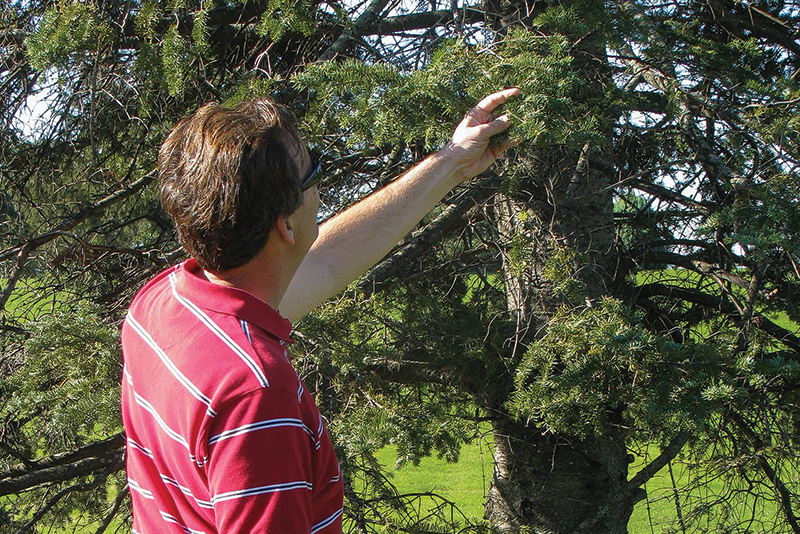
Regular inspection of new and mature trees is essential to their success.
The bad stuff: Unapproved and detrimental
Elevations. It’s helpful to ride an elevator in a tall building to reduce the wear and tear on your knees, but just the opposite occurs in a tree: Removing otherwise healthy lower limbs greatly reduces the photosynthetic capacity of the tree, creates unnecessary wounds on the trunk and reduces the tree’s ability to resist the energy of the windstorm. In short, it’s best to leave limbs on a tree unless they are broken, excessively long or pest-infested.
Lion’s tailing. Removal of inner shoots on tree branches is called lion’s tailing, as a limb is produced that resembles a male lion’s tail. Doing so decreases the tree’s capacity to diffuse the energy of a storm and creates lots of unnecessary wounds. If a limb becomes problematic, it’s best to simply remove it rather than create a lion’s tail.
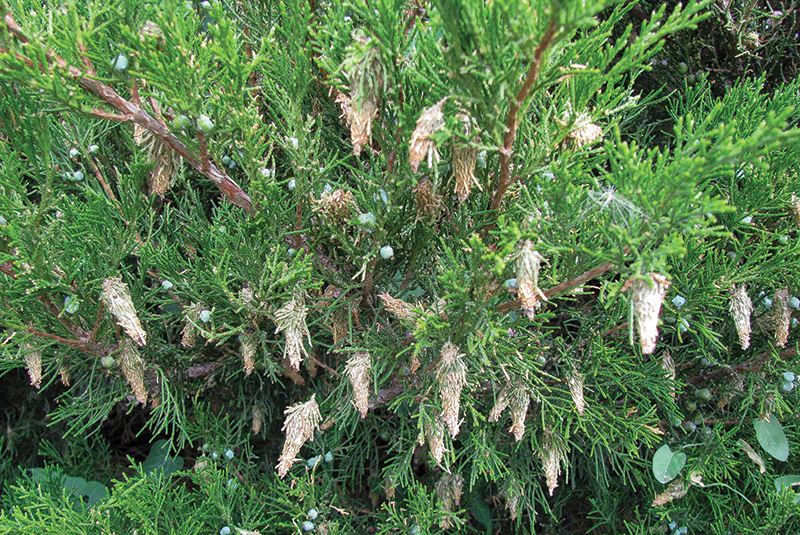
Most maladies in the golfscape are better prevented than cured.
Topping. Most GCM readers know cutting off the top of a woody plant is a no-no, but again, it happens. Topping causes poor structure, allows excessive sunlight to enter a formerly shaded canopy and greatly reduces photosynthesis. As well, the branches that develop on a topped branch are connected to the tree only in the outer growth ring, not deeply into the heartwood like an original one is, resulting in weak limb attachments.
Poor pruning timing. Timing is such an important practice in all facets of life, from making a turn while driving a car to scheduling a flight on an airline. The general principle for pruning is to make the cuts when the tree has the greatest opportunity to close the wound; for most trees, this is early spring, when cambial growth naturally occurs. The worst time is early winter, when cuts are open to drying winds for a long period of time.
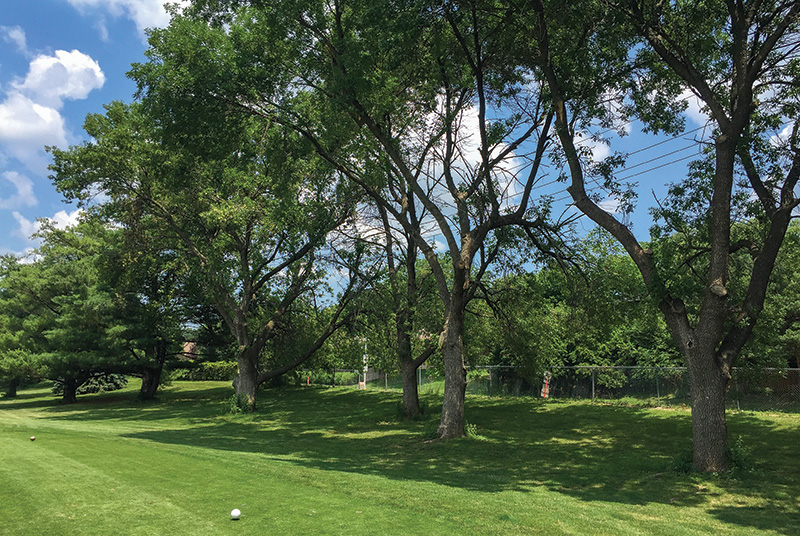
Cutting off lots of lower limbs will significantly weaken a tree and increase susceptibility to damage in windstorms.
Poor pest control timing. Missing the window of vulnerability is a bad practice in that it wastes time for the applicator, subtracts money from the budget without a return on the investment and places a pesticide into the golfscape unnecessarily.
Pest control based on tree reputation, not pest presence. While it’s true that certain trees such as crabapples are often associated with certain pests (such as apple scab, aphids and cedar apple rust), pests must be present in an actual or recently historical sense to justify an application of a pest control agent.

Regrowth after topping is weakly attached to a limb.
The maybe stuff: Situation dependent
Cabling and bracing. Stabilizing weak branch arrangements through installation of hardware is a technique used in high-visibility and target-rich environments, ones where people and valuable property items are frequently present. The procedure has pros and cons, most notably making weak trees stronger and drawing unwanted attention to a hazardous situation. Generally, cabling is recommended only on a temporary basis.
Fertilization. In most golfscape settings, trees receive adequate fertilization via downward movement of nutrients from turfgrass applications. Because the majority of tree species have a lesser need for various commonly applied nutrients, additional fertilizer applications are not recommended unless a specific need arises, such as iron chlorosis or micronutrient deficiency.
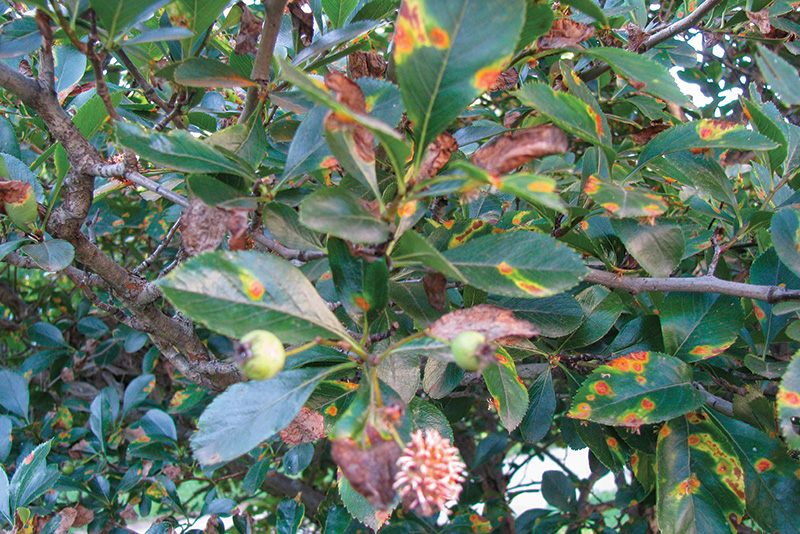
Making observations and documenting them helps to prevent future problems.
Plant growth regulator applications. When trying to encourage recovery from heat, drought, compaction or pest stressors, plant growth regulators (PGRs) may provide desirable results. Most strategies aim to suppress shoot growth in order to redirect plant resources to the root system, resulting in a greater capacity to tolerate stress and adverse environmental conditions. In some cases, PGR application is a “last-ditch effort” designed to save a highly desirable tree.
Air spading. In order to gain a small degree of insight into root distribution and condition, applying a concentrated air stream to the root collar will remove soil and make roots visible. Since they are usually not visible, this procedure is often helpful to identify issues such as rotten or stem-girdling roots. Once uncovered, it may be possible to remove the problematic tissue and encourage the root system to recover. Unfortunately, air spading takes several hours to perform, makes a big mess on the turf surface and may not result in any information being learned about the tree’s root system.
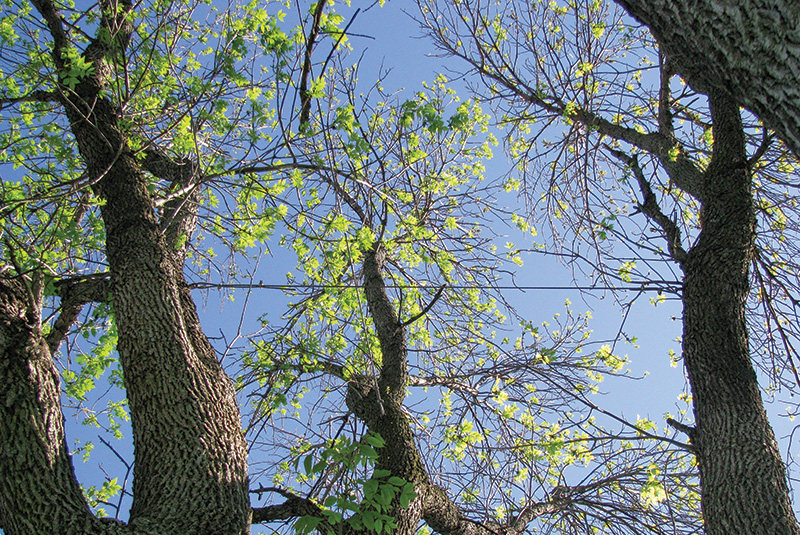
Cabling can stabilize a tree in the short run; however, it’s important to realize that it’s a short-term fix.
Radial trenching. This is a procedure that involves using a deep cultivation tool to create 6-to-12-inch trenches, beginning near the trunk and extending outward to the drip line of the tree. The primary benefit is to relieve soil compaction under the canopy and encourage new root production. Radial trenching is also considered to be a last-ditch effort but has been proven to be effective in many circumstances. Compost and/or mycorrhizae are often mixed with the soil removed in the trenches and returned as backfill.
Dedicated irrigation. Because most trees require less water than turf, ones that are in the standard irrigation pattern usually don’t need to be watered separately. In fact, applying “extra” water to trees next to a fairway, tee or green often results in root rot or decay. Trees that are growing in-out-of-bounds areas, however, may need dedicated irrigation systems, run in a manner to keep roots moist, not soggy or dry.
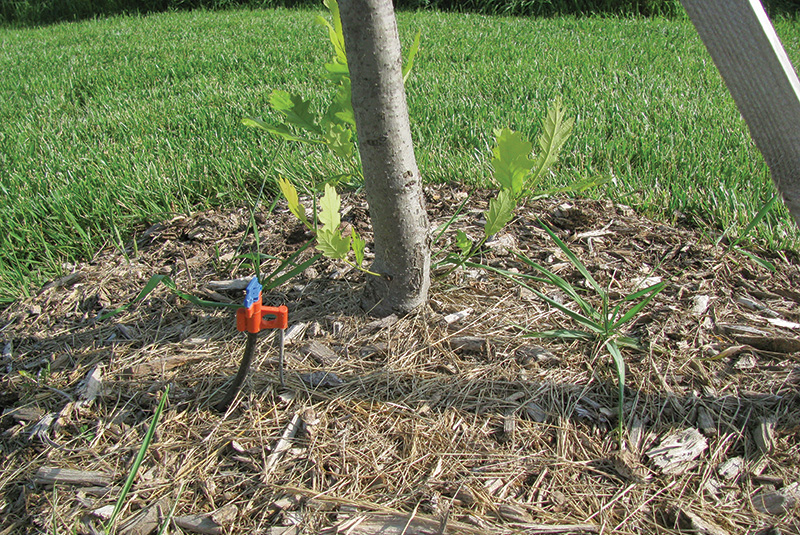
Trees in non-turf irrigated areas can benefit from periodic irrigation, especially in their first few years of establishment.
Shade-reduction cuts. Removing limbs to allow more sunlight to penetrate under a tree canopy is usually a technique that is effective in the short term but counter-productive after just a few years. After branch removal, negative outcomes often result, such as weak regrowth, the need to prune again in a few years and increased susceptibility to storm damage. If a tree casts too much shade, removal is usually a better option than shade-reduction cutting.
Elimination of large diameter co-dominant branches. Removing one of the branches in a co-dominant arrangement when they are small – 1 to 2 inches in diameter – is a good procedure, as it eliminates problematic structural tissue, and the remaining branch is able to recover relatively soon after pruning. However, when branches are wider than 6 inches, they often decay in the years following, leading to a great weakness in the canopy. Removal of large-diameter leaders is only recommended when doing so will solve an even greater problem than internal decay of the remaining branch.
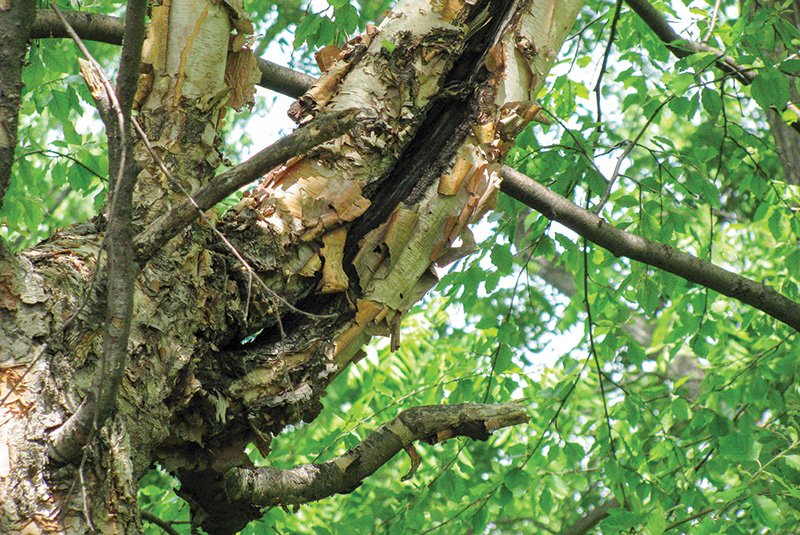
Cracks are a defect to pay close attention to in a tree. In this case, it’s probable that the tree can be stabilized by branch removal; trunk cracks usually require tree removal.
The other stuff: Usually calls for removal
Though not in all cases, there is a group of conditions that are best described by “Watch it Over Time” — as such, it’s important to keep a close eye on these:
Cracks. Separation of bark, sapwood and heartwood is a serious development in a tree’s life. Depending on the depth of the crack and the tree’s placement in the golfscape, removal is often recommended sooner than later.
Leaning. Trees lean for two reasons: to grow toward the sun (phototropism), and damage in the root system. Phototropism is not a problem, while root-system changes are. In most cases, a nonphototropic tree leans because there has been a significant separation of roots and soil particles, usually associated with a pushed-up mound of soil near the trunk. If this is seen, immediate removal is recommended.
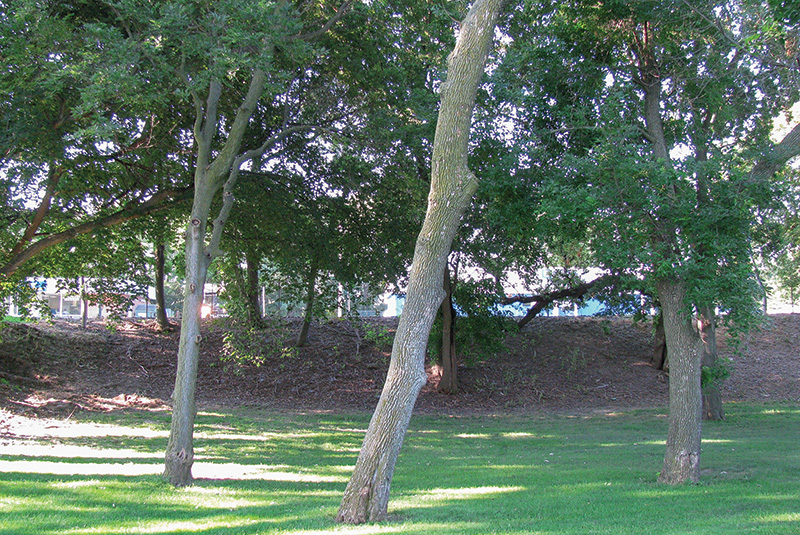
Simple phototropic leans are not a serious problem; each leaning situation should be thoroughly inspected by a certified arborist.
Extensive decay/sunscald. Flaking and peeling bark on the south, west or southwest side of a tree in the first 10 years of a tree’s life often leads to a serious lack of water conductivity and, thus, significant stress. In these situations, a removal or retention decision needs to be made before the problem enlarges and causes further reduction in the movement of water.
Included bark. One of the reasons for removing a branch in a co-dominant arrangement is that the conductive vessels of each almost always begin to compress against each other to the point of restricting water and nutrient flow. If it is sufficiently reductive, the recommended action is tree removal or at least branch reduction.
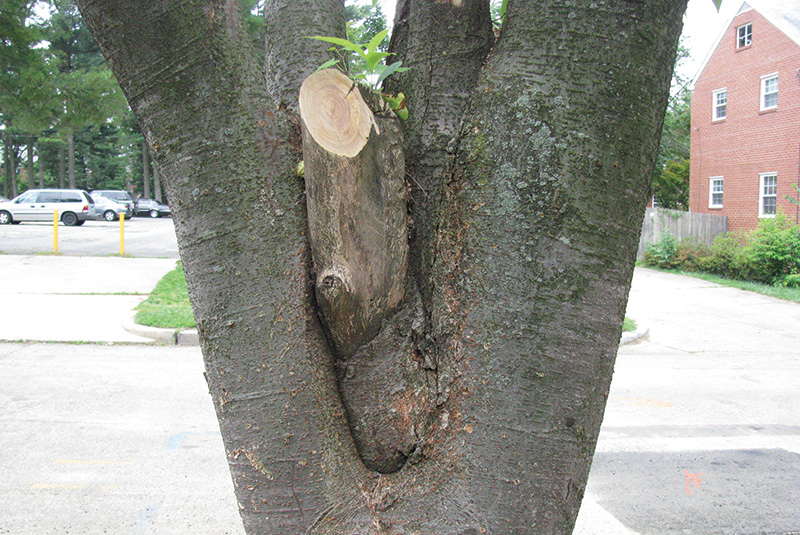
Compressed conductive tissues often fail to move sufficient moisture and nutrients
throughout the tree.
Deep planting. Trees that are planted too deeply often do not develop an adequate lateral root spread, resulting in a lack of stability and capacity to extract sufficient water and nutrients to provide for the tree’s needs. If a tree has been planted more than a foot deep, tree removal is usually the best option.
Stem-girdling roots. Roots that encircle the trunk rather than radiate horizontally from it are one form of included bark. As the girth of the trunk and girdling root increase in diameter, they increasingly restrict water and nutrient flow. Although air spading can help identify this malady, the only solution is to remove the roots, which often results in decay and/or the proliferation of additional stem girdling roots.
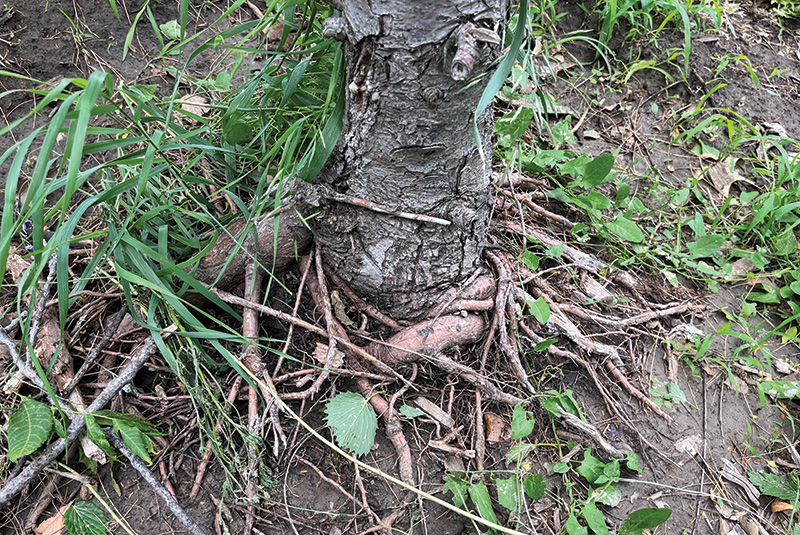
Stem-girdling roots are usually a result of lack of attention to detail during planting.
“Forever maladies.” Problems that require frequent intervention to keep a tree alive such as micronutrient injection or yearly severe fungal infections should be reconsidered whether a particular tree is justified for retention in the golfscape. If it is serving an extremely important function, then it may be worthwhile; if it’s just an “ordinary” tree, then perhaps not.
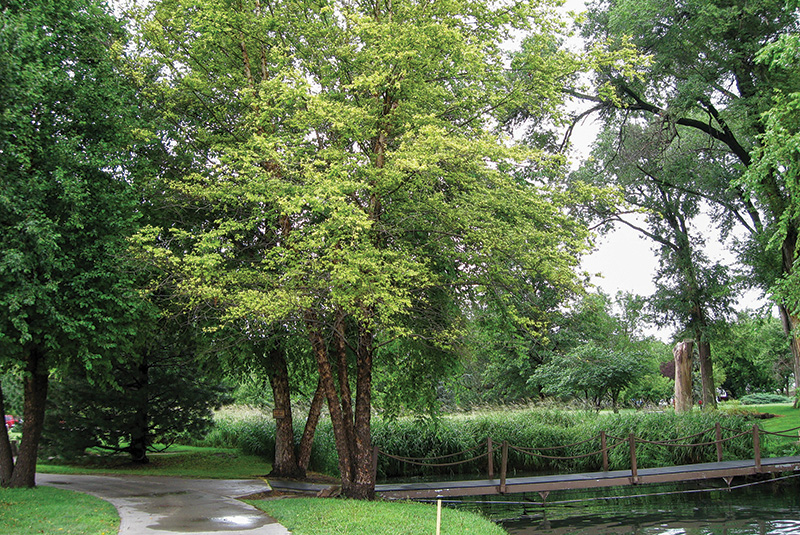
Depending on the importance of the tree to the course, severe iron chlorosis usually falls into the “forever malady” group of issues.
Techniques for spotting a problem
Considering the ease of detecting a tree problem, sometimes it’s obvious, sometimes it’s not. The best way to know if an intervention is needed or a best practice should be implemented is to know the tree, asking the question of, “Is it supposed to look like that?” For example, “Is the bark supposed to be peeling?” or “Is that a flower or an insect gall?” Secondly, it’s important to remember how trees grow in terms of how roots develop and become oriented, if and when they flower, when needles/leaves are shed and if they are weak or strong competitors with turf.
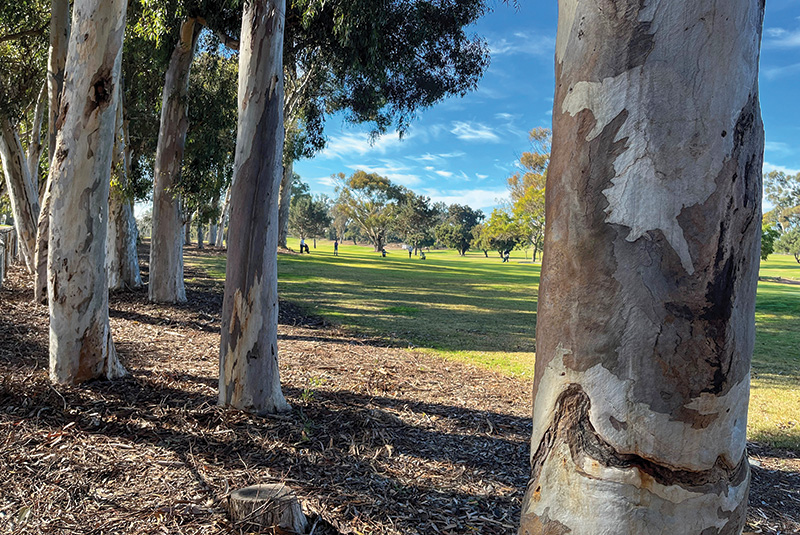
Exfoliating bark.
When beginning a close look-see, start whole picture, looking at the entire tree and its surroundings, then home in on tree features that look out of place based on how the tree is supposed to appear. This is best done as a dedicated practice, not just tacked on to routine golf maintenance procedures. Once a questionable tree observation (or several) has been noted, it’s wise to confirm the suspicions with an ISA Certified Arborist and/or university Extension faculty members. They will be able to provide an informed second opinion and help devise a corrective management plan going forward.
John C. Fech is a horticulturist and Extension educator with the University of Nebraska-Lincoln. He is a frequent and award-winning contributor to GCM.